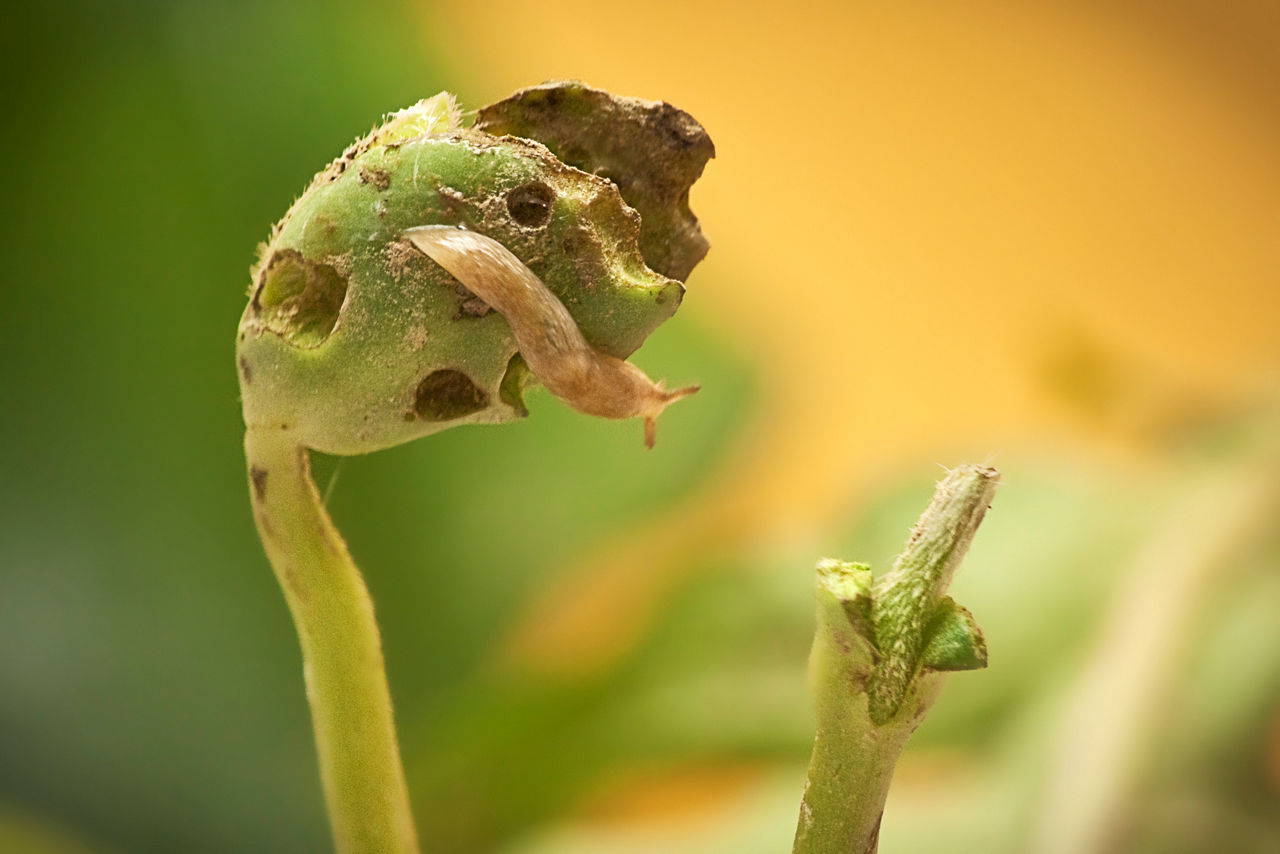5 MIN READ
Slug Injury, Identification, and Management
February 6, 2022
Background Information
Slugs are pests commonly found in gardens, yards, and field crops across the Midwest and Eastern United States. They have been found to feed on nearly every field crop with the most damage occurring during crop establishment which can result in economic injury. Wet, cool, heavy residue conditions are conducive for higher slug populations which are common with no-till cropping systems.
Close relatives to the snail, the slug has a soft, legless body that is covered in mucus or slime which it can use as a defense mechanism to aid in movement. They are gastropods which can measure up to 4 inches long but are usually closer to ½ to 1-½ inches in length.1 The typical lifecycle of a slug progresses from egg to juvenile to adult, and they can live for a year or more.
Slugs are hermaphroditic organisms meaning they have both male and female reproductive organs; however, they commonly mate with other slugs. Not all slug mating cycles are synchronized and any stage of slug can be found at any time of year, but the general trend is slugs mate and lay eggs in the fall just beneath the soil surface.2 These eggs resemble a translucent gelatinous mass with each egg about half the size of a bb-gun pellet which overwinter and hatch in the spring the following year. The juvenile stage is typically the height of slug feeding on crops in mid to late spring.2
Slug Identification
There are three common slugs: the gray garden slug (Deroceras reticulatum), the dusky slug (Arion subfuscus), and the marsh slug (Deroceras leave), with a fourth species, the banded slug (Arion fasciatus), that is more prevalent in the mid-Atlantic. The gray garden slug was introduced to the United States in the 1800s from Europe; it is the most common slug in field crops and causes most of the economic damage.3 It is grayish-brown color, with a white defensive slime commonly used to identify it. The other slugs are typically not associated with economic damage.
Damage
The damage caused by slugs typically occurs following egg hatch during early crop establishment on seedlings. Feeding usually occurs at night and slugs tend to stay underneath the protection of plant residue during the day. The extent of damage is affected by the type of crop, crop growth stage, and size of slug.3 In corn, the growing point is beneath the soil surface, and the damage is usually limited to defoliation of the first few leaves. The term “window-pane” damage is used to describe slug damage in corn as the slugs eat strips of foliage which can then lead to leaf shredding (Figure 1).2 In soybean, the growing point is above ground and when damage occurs on the cotyledons severe stand loss can occur. Slug feeding on soybean cotyledons causes “craters” and holes in the leaves (Figure 2).2 Seed slots that remain open following planting are associated with higher levels of damage due to the cool, dark conditions that funnel slugs from one seedling to the next.


Scouting and Management
There are no economic threshold limits that have been set for slugs. Tips for slug scouting include checking under crop residue in the spring prior to planting for eggs and adults, and walking fields in the evening or at night with a flashlight to check seedling leaves for juveniles. There are few management options for slugs, and most are mechanical as the chemical control options are usually not economical at the field scale. Any practice that reduces crop residue such as tillage, can help reduce slug populations. Proper closure of seed slots can also benefit seedling crops by preventing the slugs from following the row.1 For those that practice minimum or no-till, the best option is to use row cleaners at planting to physically move the slugs away from the seed furrow and expose the soil around the seed furrow to sunlight which allows for drying and warming of the soil. The drier, warm soil should create soil conditions that favor rapid seedling growth and are less conducive to slug movement and feeding. Planting earlier is another option that growers can use to try and help the seedlings grow and become established prior to peak slug feeding. While defoliation may still occur, the thought is that the plants can sustain the damage and outgrow it until growing conditions become unconducive for slugs to feed.
Sam Park
Channel Agronomist
Sources
1Krupke, C., Bledsoe, L., and Obermeyer, J. Slugs: pests: integrated pest management. Purdue University Extension. https://extension.entm.purdue.edu/fieldcropsipm/insects/corn-slugs.php.
2Douglas, M.R. and Tooker, J.F. 2010. Slugs as pests of field crops. Penn State University Extension. https://extension.psu.edu/slugs-as-pests-of-field-crops.
3Hammond, R.B., Michel, A., and Eisley, J.B. 2014. Slugs on field crops. Ohio State University Extension. https://ohioline.osu.edu/factsheet/ENT-20.